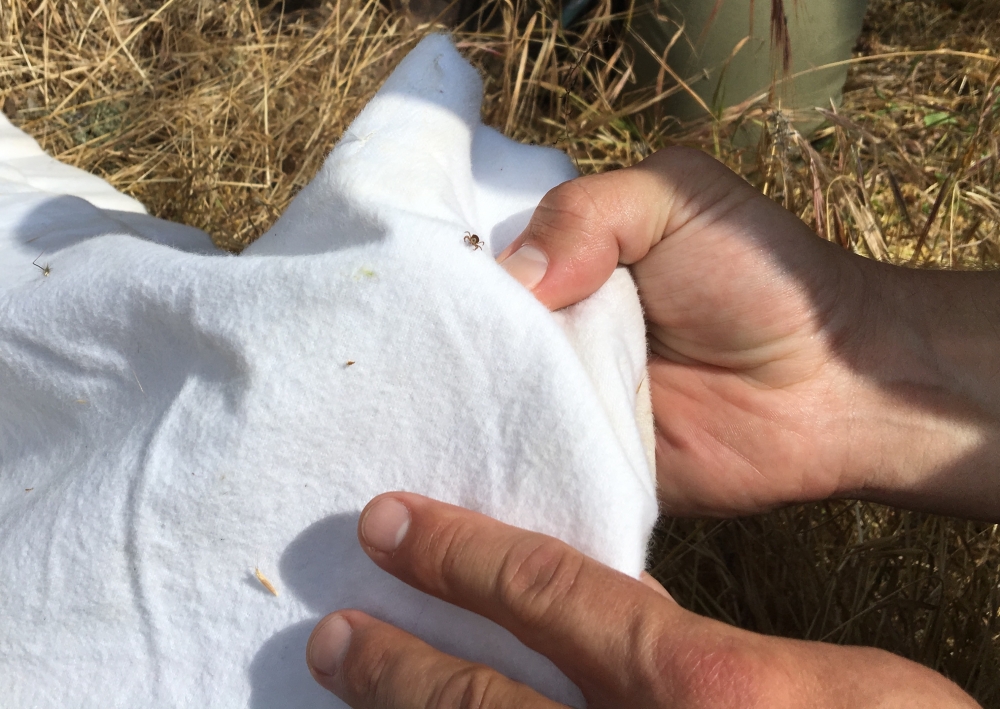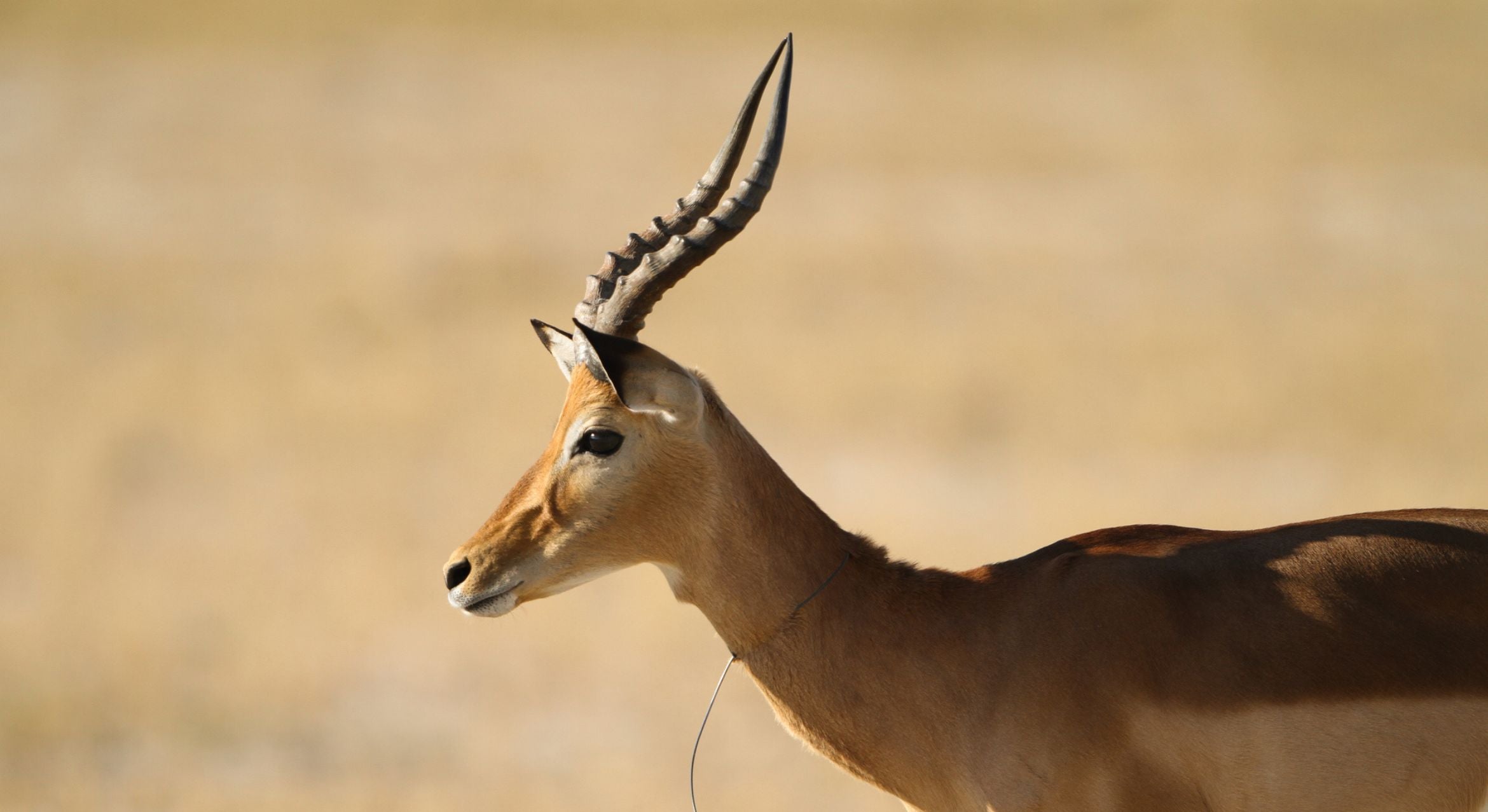
Tick Talk

Many people think of ticks as disease-carrying, blood-sucking parasites. And for the most part, they’re right.
In a public lecture at the university’s Sedgwick Research, UC Santa Barbara disease ecologist Andy MacDonald detailed his research into these creepy creatures. His talk was part of the reserve’s ongoing Walking Ecology series.
MacDonald investigates how seasonal and environmental factors drive the abundance, activity and infection rates in ticks. He is particularly interested in Lyme disease in the Western United States. The ticks that transmit Lyme disease prefer oak and other hardwood woodlands, which makes Sedgwick an ideal study site.
“Sedgwick has been a part of almost every field study that I’ve conducted on this topic,” said MacDonald, an assistant researcher at the university’s Earth Research Institute. “In fact, basically all of my field research happens in the UC reserves.”
Of the scores of tick species in California, the main danger to humans comes from the western blacklegged tick. “The bacteria has been found in a handful of other species,” MacDonald said, “but there’s really only one that can transmit the pathogen to humans.” Ticks hatch as larvae in spring and need to feed three times in their 3-year lifecycle. All of them hatch uninfected, so it’s only after feeding on an infected host that they catch the pathogen, he explained.
Small mammals such as woodrats, grey squirrels and mice are more likely to carry and pass along the infection to feeding ticks than are large animals, like deer and cattle. Although the abundance of these large mammals is critical in determining how many eggs an adult tick can lay. Lyme does not appear to transmit from parents to offspring in hosts or ticks.
Ticks are poor eating, so they have few predators. As a result, their populations are determined primarily by environmental conditions like habitat, temperature, humidity and rainfall. For instance, western blacklegged ticks prefer cool, wet conditions to hot, dry ones. Their numbers and density drop in unfavorable conditions, as does their period of activity.
All of these factors are in flux in our changing world, according to MacDonald. For example, he said, climate change has likely contributed to increases in the incidence of Lyme disease in the Northeast, where ticks are active in the humid spring and summer, and the pathogen is on pace to expand into eastern Canada as conditions warm. In contrast, the west is becoming dryer, which may actually reduce the prevalence and range of Lyme disease in California.
Habitat and hosts strongly influence tick populations. MacDonald collected ticks at three different UC reserves and found the abundance of adult ticks went hand in hand with that of hosts. In contrast, canopy and leaf litter cover most strongly predicted the numbers of larvae and nymphs — the first and second of a tick’s three life stages.
But tick infection rates vary widely even within a small area. “I might find no infected ticks during one survey, but it could be that I move one canyon over and, boom, there it is,” MacDonald said.
Habitat fragmentation has also impacted ticks and Lyme disease. Patchy habitats tend to favor animals that are more susceptible to Lyme disease. Scientists think this may be because the species that remain, like white-footed mice, tend to invest less effort into raising individual offspring, going for quantity over quality. This means they may also put less energy into defense against parasites and infection making them good reservoirs for tick transmitted pathogens.
Researchers aren’t certain whether this is a quirk of Lyme disease in the Northeast or if it’s true more broadly. “It’s a hypothesis that people are out there actively looking into, actively testing,” said MacDonald, “but it’s a controversial one.”
Habitat fragmentation also increases the transition zone between developed and wild lands, precisely where most human tick bites tend to occur. Nevertheless, MacDonald has found that human decisions respond to disease risk. People tend to settle higher-risk areas less intensely, which actually slows habitat fragmentation. It’s a dynamic interaction.
All of these environmental issues have a flip side as well. We can leverage climate change action, land management and biodiversity protection to curb the severity of vector-borne diseases like Lyme, MacDonald said.
As for what the future will bring, he can’t say for sure. “It’s a really complicated system that I think will continue to surprise us,” he said, “and we’ll continue to learn new things about it for a really long time.”
Sedgwick Reserve’s Walking Ecology lectures and field classes take place on the second Saturday of most months. Focusing on the ecology of Sedgwick Reserve, they are led by leading scientists, educators and naturalists specializing in California's physical and natural sciences. Registration is required.



